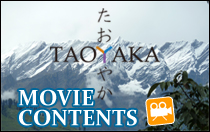Onsite Team Project : Fall-Winter 2015
From TAOYAKA Newsletter Vol.5 Summer 2016
The final stage of the onsite education. The third year (D1) of TAOYAKA Students team-up with multidisciplinary course members and challenge a real-world problem.
Development of biomass-based ecotourism in Kita-Hiroshima, Japan
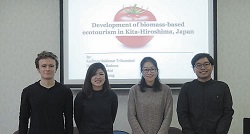 Project Members:
Project Members:
1. Nattacha Paksung (D1), Technical Creation Course
2. Mattana Tunchai (D1), Technical Creation Course
3. Andhang Rakhmat Trihamdani (D1),
Social Implementation Course
4. David Perez Barbosa (D1), Social Implementation Course
Being the first on-site team project in the Taoyaka program (May 2015 to February 2016), our team was assigned for catering to the situation, challenges, and opportunities of the site. The target area of the project was Oasa and Chiyoda Town in Kita-Hiroshima, Hiroshima prefecture, Japan. The places are located in a mountainous area, 50 km from Hiroshima city. They are famous for cultural tourism (i.e. Kagura), as well as winter sports. Similar to the current state of many rural regions in Japan, Kita-Hiroshima is facing the issues attributed to an increasing aging population and depopulation, which pose many challenges for the region’s future.
As an initial step, several field trips were conducted in order to understand the study area. We interviewed the people who are involved in agricultural and tourism practices in the region and stayed with a local family in Chiyoda, as well. Moreover, we joined the regular events held by a non-profit organization called INE OASA. Getting in touch with the local people helped us to gain useful insights and their cooperation as well.
From our experiences during the field trips, we listed the main problems faced by the area: (1) depopulation and an aging society, (2) limited agricultural production in winter, (3) inability of small-scale farmers to depend on the income from agricultural production alone, and (4) limited options for sport tourism in summer.
Accordingly, the objectives of our project were set as follows: (1) find mechanisms to increase the agricultural production of the area; (2) diversify the value-added products from existing agricultural production; (3) take advantage of agricultural residues to generate energy; and (4) utilize the natural environment to generate tourism activities, especially in summer.
All these initiatives were aimed at creating further income possibilities and attracting more visitors, which would help the small-scale farmers, businesses, and residents in revitalizing the area.
Tomato Related Activities
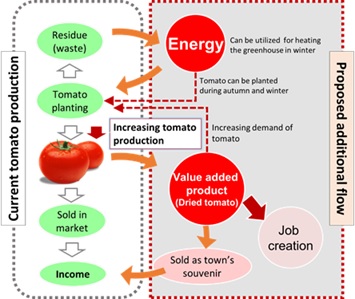 Tomato is the largest vegetable product of Kita-Hiroshima; it is cultivated in the spring–summer seasons. In contrast, we could rarely find tomato-based products in the area. Moreover, the agricultural residue simply goes to waste. Therefore, we proposed a new cycle for the existing tomato production process (see below) in order to enable the utilization of tomato residues for generating energy.
Tomato is the largest vegetable product of Kita-Hiroshima; it is cultivated in the spring–summer seasons. In contrast, we could rarely find tomato-based products in the area. Moreover, the agricultural residue simply goes to waste. Therefore, we proposed a new cycle for the existing tomato production process (see below) in order to enable the utilization of tomato residues for generating energy.
We chose supercritical water gasification (SCWG) because it is suitable to convert wet biomass into hydrogen-rich gas, without drying it. The gas produced by SCWG can be used for heating the greenhouse in winter. Therefore, it is expected that farmers will be able to increase their production by 0.2 ton (equal to 1.7 greenhouses) if all the tomato residues are turned into feedstock. Since the increment is quite small, other agricultural residues (e.g. rice husk) should be used, as well, to generate more energy to power more greenhouses.
In addition, we developed a tomato-based value-added product. In this study, from various options, dried tomato was chosen to be developed. In October 2015, a dried-tomato-making workshop was conducted to introduce the recipe to the local residents of Kita-Hiroshima. The results of a sensory test and market survey indicated that the dried tomato was acceptable to the market, has potential for commercial-scale production, and could generate more income to the farmers.
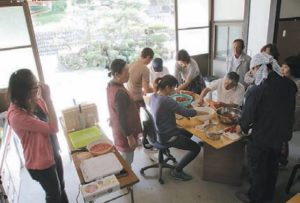
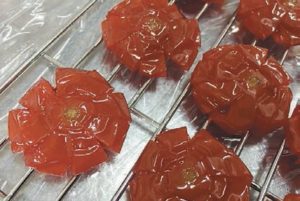
(Left: Dried Tomato-Making Workshop)
(Right: Home-Made Dried Tomatoes)
Cycling-related activities
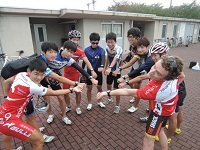 Cycling-related activities aim to provide more options to the existing sports tourism in Kita-Hiroshima. In order to study the town’s potential regarding sports tourism activities, a group of 10 cyclists joined a cycling tour and visited several interesting sightseeing spots in Chiyoda and Oasa Town. The tour was conducted in September 2015 and after that, their opinions about the places and sports tourism possibilities of the town were surveyed. The results obtained indicate a high potential for cycling tourism in Kita-Hiroshima in the warm season of the year. In addition, we developed a cycling map as a useful tool to promote the area.
Cycling-related activities aim to provide more options to the existing sports tourism in Kita-Hiroshima. In order to study the town’s potential regarding sports tourism activities, a group of 10 cyclists joined a cycling tour and visited several interesting sightseeing spots in Chiyoda and Oasa Town. The tour was conducted in September 2015 and after that, their opinions about the places and sports tourism possibilities of the town were surveyed. The results obtained indicate a high potential for cycling tourism in Kita-Hiroshima in the warm season of the year. In addition, we developed a cycling map as a useful tool to promote the area.
Lessons learned
During the course of this project, we faced several challenges and difficulties. At the beginning, most of the difficulty was related to our limited skill in using the Japanese language and knowledge of the project site. We took time to find collaborators in the university, as well as Kita-Hiroshima. While implementing the project, we learned about the importance of balancing our academic goals and approaches with the perspectives of the local residents. This is because what we want may not be what they need. In addition, we need to integrate our visions of what we want to achieve from this project; what we want to learn from it; and how we can make it beneficial for our individual research, our group, and the local people. Moreover, we need to understand that the people living in the study area have their own lifestyles and routines that we should understand comprehensively before initiating any type of activity that involves them as a community.
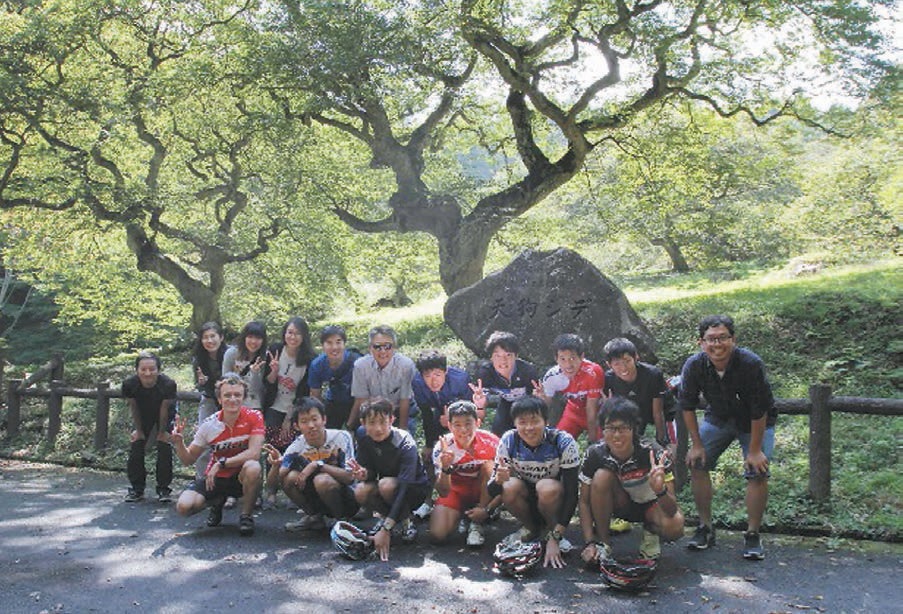 The Cycling Tour Group visit to Tengushide,
The Cycling Tour Group visit to Tengushide,
one of the most remarkable sightseeing spots in Kita-Hiroshima
Acknowledgement
We would like to thank Mr Takahiro Hotta (INE OASA), Mr Yuji Makura, Ms. Asuka Toya, and the people of Kita-Hiroshima for their significant cooperation and support. We also would like to thank Mr Masafumi Yamashita for being our interpreter and actively cooperating as our fifth team member.



